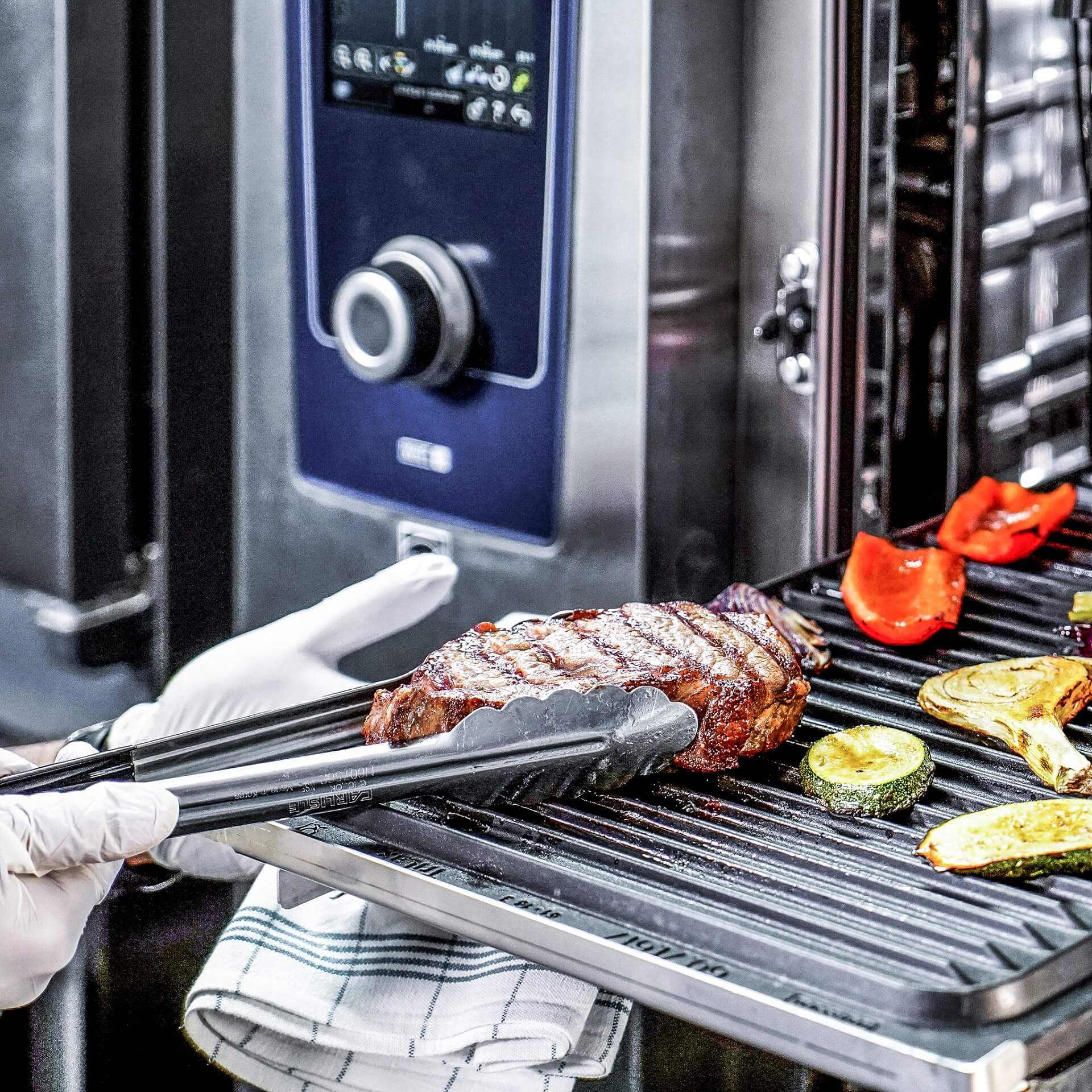Remember that summer two years ago when all foodservice businesses yearned for was to be allowed to reopen without restrictions? Now, life is – almost – back to normal. Covid-19 is still a factor, but, in most of the world, we no longer see mandatory mask-wearing requirements or restrictions on number of customers. However, hospitality venues and restaurants are still facing challenges. These include steep rises in the cost of food, massive hikes in energy costs and a shortage of labor willing to work in the sector.
Rising energy and food prices – restaurateurs face ever greater challenges
In May 2022, the UK trade magazine The Caterer reported how many restaurants were taking premium products, such as scallops, off their menus and cutting back on frying foods due to escalating costs and a shortage of cooking oil. Tom Brown, a Cornish-born chef who owns and runs Cornerstone, a Michelin-starred restaurant in London, has dropped his signature starter of a single scallop as he would have had to increase the cost from £19 to £30. John Dory, Monkfish and cod have also been taken off his menu due to a sharp increase in cost.
Sieh dir diesen Beitrag auf Instagram an
Omit course components or increase the price for a dish?
Nicolas Makowski is senior vice president, industry management, at Rational. He acknowledges the pressures facing hospitality businesses at the moment. “I was just talking to with a friend of mine who’s running a restaurant. And he asked me: ‘So I need to cover higher costs. Each of my main courses is served with a salad. Should I increase my price, or should I just skip the salad?’ After some consideration I told him don’t change the offer. Increase the price because I think that’s what people understand. There are rising costs on various levels, but I think if you change the offer and try to balance that by maintaining the price it might lead to more disappointment on the customer side.”
Remain quality, but lower amount of ingredient?
That said, Makowski also considers there is another solution to operator’s challenges. The trend towards thinking about how to create your offer and how to create your individual dish or combine your individual dishes with sustainability in mind. “I think there is a trend where the meat portion is getting smaller and the non-meat proteins and non-meat items, vegetables and so on are getting bigger,” he says. “I’m not 100% sure if it’s accepted everywhere because if people choose to order a meat dish, they are looking forward to good meat dish, but this is a trend I’m seeing in relation to costs by balancing, a little bit, the amounts you have on your plate.”

Image: RATIONAL AG
Coping staff shortage with the right equipment
Makowski also gave an example of how the right equipment can help operators cope with the shortage of labor affecting the hospitality industry. “We have a customer operating about 16 kiosks in a soccer stadium. The main issue is to find qualified people to operate the food production and by using the right equipment they can now operate these kiosks even with lower qualified people because they are using MyDisplay so they just click on a picture. That’s a big benefit on the operational side.”
Using tech to analyse your food business
Smart kitchen equipment not only provides perfect product consistently, which helps to cut down on food waste, but can also help operators with analyzing their business. “I think the offer we have with ConnectedCooking allows you too, to analyze your operation much better,” says Makowski. “It allows us as a supplier to support clients in terms of preventive maintenance. This helps customers to reduce their running costs and service costs around the equipment. It’s not about control. It’s about training. So based on the knowledge you get out of out of data, you can build up a better training for your staff. It’s about finding out what we can do better based on identifying the real usage.”

Image: RATIONAL AG
Nick Jordan founder and CEO of data commerce company Narrative explains that making decisions based on data can help foodservice operators keep control over their costs in a number of ways. “First, it can help them identify areas where they are spending more money than necessary and make changes accordingly,” he says. “Second, it can help them track trends over time and adjust their budget as needed. Finally, it can help them compare their own performance to that of other foodservice operators and make changes to their own operations as needed.
For small operators without a dedicated data team or large budget for data-related projects, data commerce platforms make it easy to find and buy data without needing technical skills or significant upfront costs. Large operators with more resources can also benefit from data commerce platforms’ flexibility and scale, allowing them to centralize their data acquisition operations and access new sources of data all in one place.
Albeit times are challenging: try to keep your customers happy
Ultimately, Rational’s Makowski reckons keeping customers happy is the aim of most operators in order to keep their business going during challenging times. “I personally believe customer satisfaction should be the highest aim right now,” he says.

Image: AdobeStock | fizkes
“If you put that at the top, whatever you do you will have, by definition, more happy customers than unhappy customers. And if you have happy customers, they will return, they will recommend and they will cherish what you’re offering. So, I think that should always be the goal, not just for these particular times. I think that’s a core philosophy for most businesses.”
- It’s better to increase the price of your dishes and explain it to your customers than omitting ingredients and maintaining the price.
- Provide high-quality – for example, sustainably produced meat – and reduce the amount, rather than going for low quality.
- Deal with staff shortages by installing the right equipment.
- Use technology to analyze your business and get cost transparency.
- Make customers satisfaction your highest aim in everything you do.
















